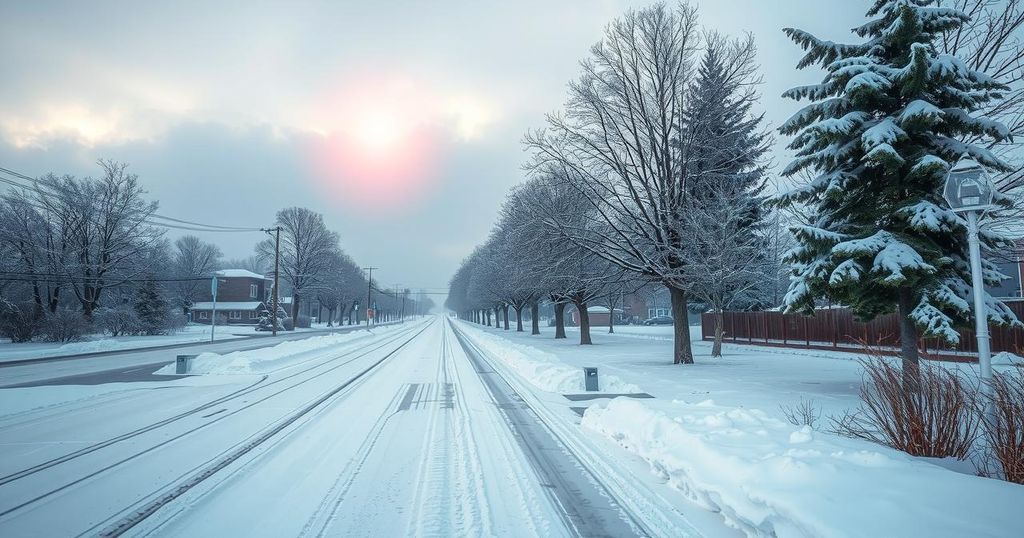Reflections on Raleigh’s ‘Snowpocalypse’: AI’s Role in Weather Imagery

The article reflects on the 2014 ‘Snowpocalypse’ in the Triangle region, discussing its transformative impact on the community and social media. It further explores the rising concern over artificial intelligence in weather photography, highlighting difficulties in distinguishing real images from generated ones. Finally, it invites community members to share their experiences during the event.
In February 2014, the Triangle region experienced a significant winter storm, referred to as “Snowpocalypse.” High pressure provided cold air from the north while low pressure contributed moisture from the south. The storm resulted in heavy snowfall, prompting early school dismissals and causing widespread traffic chaos, with vehicles stuck on the roads amid accumulating snow and later, sleet and freezing rain.
The internet quickly became a hub of activity as people shared memes and images related to the event. A notable photograph taken by Lindsay Webb captured the chaos on Glenwood Avenue, featuring stranded vehicles and individuals attempting to navigate the conditions. At that time, social media began to flourish, allowing users to connect and share experiences through humor and imagery.
In recent years, the rise of artificial intelligence in weather photography has raised concerns about the authenticity of images shared online. According to photographer Peter Forister, A.I. image generation technology has advanced significantly, making it increasingly challenging for the untrained eye to differentiate between real and artificially created images. He noted that during significant weather events, misleading images can proliferate on social media, affecting public perception.
Forister highlights that one distinguishing factor of A.I.-generated images is their “plastic” appearance, urging individuals to critically assess the content they encounter online. This advice is particularly pertinent during extreme weather occurrences, as misinformation can spread quickly. He advocates for greater vigilance while consuming weather-related media as a means to navigate potential deceptions.
Finally, the narrative invites individuals to share their memories from the “Snowmageddon” event of 2014, encouraging community engagement through platforms like WRAL.com. The article serves as both a recollection of the challenges faced during the storm and a cautionary note regarding the implications of A.I. in visual representations of weather phenomena.
In conclusion, the ‘Snowpocalypse’ of 2014 left a lasting impact on the Triangle region, demonstrating the chaos that can ensue from sudden snowstorms. Moreover, the emergence of A.I. technology in weather photography raises concerns about image authenticity, underscoring the need for critical assessment of weather-related media. Engaging the community by sharing memories fosters connection and collective recollection of past experiences.
Original Source: www.wral.com






